Transcription of Wavelet Transforms | A Quick Study - New York University
1 Wavelet Transforms A Quick StudyIvan W. SelesnickPolytechnic UniversityBrooklyn, NYSeptember 27, 2007 This is an expanded version of the QuickStudy inPhysics Todaymagazine, October, Wavelet transform has become a useful computational tool for a variety of signal and imageprocessing applications. For example, the Wavelet transform is useful for the compression of digitalimage files; smaller files are important for storing images using less memory and for transmittingimages faster and more reliably. The FBI uses Wavelet Transforms for compressing digitally scannedfingerprint images. NASA s Mars Rovers used Wavelet Transforms for compressing images acquiredby their 18 cameras. The Wavelet -based algorithm implemented in software onboard the MarsRovers is designed to meet the special requirements of deep-space communication.
2 In addition,JPEG2K (the newer JPEG image file format) is based on Wavelet Transforms . Wavelet transformsare also useful for cleaning signals and images (reducing unwanted noise and blurring). Somealgorithms for processing astronomical images, for example, are based on Wavelet and Quick Study describes the Wavelet transform, illustrates why it is effective for noise re-duction, and briefly describes several improvements of the basic Wavelet transform and basic noisereduction method used in the illustration. We describe what the Wavelet transform is, and wedescribe algorithms for processing a signal after its Wavelet transform has been computed. First weshould point out that there are two basic types of Wavelet transform. One type of Wavelet transformis designed to be easily reversible (invertible); that means the original signal can be easily recoveredafter it has been transformed.
3 This kind of Wavelet transform is used for image compression andcleaning (noise and blur reduction). Typically, the Wavelet transform of the image is first com-puted, the Wavelet representation is then modified appropriately, and then the Wavelet transformis reversed (inverted) to obtain a new image. The second type of Wavelet transform is designedfor signalanalysis; for example, to detect faults in machinery from sensor measurements, to studyEEG or other biomedical signals, to determine how the frequency content of a signal evolves overtime. In these cases, a modified form of the original signal is not needed and the Wavelet trans-form need not be inverted (it can be done in principle, but requires a lot of computation time incomparison with the first type of Wavelet transform). In this Quick Study we will focus on thosewavelet Transforms that are easily most basic Wavelet transform is the Haar transform described by Alfred Haar in 1910.
4 Itserves as the prototypical Wavelet transform. We will describe the (discrete) Haar transform, as it1encapsulates the basic concepts of Wavelet Transforms used today. We will also see its limitation,which the newer Wavelet transform (in 1998 by Ingrid Daubechies) resolves. The basis of the Haartransform is the decomposition of a signal, say the eight-point signalx(n),34557642into two four-point signals. One being the average of pairs of signal values,c(n) other signal being their differences,d(n): decomposition can be written asc(n) = (2n) + (2n+ 1)d(n) = (2n) (2n+ 1)and represented by a block diagram:AVE/DIFFc(n)d(n)x(n)It should be clear that this decomposition can be reversed. The original signalx(n) can be recon-stituted from the two shorter signals usingy(2n) =c(n) +d(n)y(2n+ 1) =c(n) d(n)which we represent by a block diagramINVc(n)d(n)y(n)2 When we repeat the simpleAVE/DIFF signal decomposition procedure a number of times, eachtime on the average signalc(n), we get the Haar transform.
5 For our toy example eight-point signal,theAVE/DIFF decomposition can be repeated up to three times. In this case the Haar transformcan be expressed clearly in block diagram form asAVE/DIFFd(n)x(n)AVE/DIFFd2(n)AVE/DIFFc 3(n)d3(n)The Haar Wavelet representation of the eight-point signalx(n) is simply the set of four outputsignals produced by this three-level operation. Four our example, the four signals (or vectors) havelengths 1, 1, 2, and 4. Specifically,c3= [ ]d3= [ ]d2= [ , ]d= [ ,0, ,1]These values, taken together, are called the Wavelet representation of the signalx. Note that thesingle valuec3is simply the average value of the original signal values,x(n).In general, if the original signal is of length 2M, then the decomposition can be repeated up toMtimes. (In case the length of the original signal is not a power of two, there are several way toaccommodate that.)
6 The Haar transform can be very easily reversed by successive use of we take the three-level Haar transform of the 128-point signal:we obtain the following Wavelet representation :3which can be reversed to retrieve the original signal. The three-level Wavelet representation consistsof four vectors of lengths 16, 16, 32, and 64. Notice that many of the values of the waveletrepresentation are small in value; we have what is called asparserepresentation of the property is precisely what makes the Wavelet transform useful for compressing images. Forcompression, the preponderance of zeros (in practice, small values) in the Wavelet representationmeans that fewer bits need to stored in memory. Admittedly, the signal we have used here is chosenso as to exaggerate this property. Specifically, the signal we have used is constant over much itsextent, and therefore the differencing part of theAVE/DIFF decomposition produces zeros.
7 The largevalues in the Wavelet representation are produced by the discontinuities in the signal and by thoseparts of the signal that are not constant. The Haar transform works well (provides a relatively sparsewavelet representation ) for signals that are approximately piecewise constant. For more general(and more commonly encountered) piecewise-smoothsignals (not necessarily piecewise-constant)one must use the newer (1988) Wavelet Transforms to obtain sparse Wavelet 1988 Daubechies constructed a family of easily implemented and easily invertible wavelettransforms that, in a sense, generalize the Haar transform. Like the Haar transform, the wavelettransform is implemented as a succession of decompositions. The only difference is that theAVE/DIFF decomposition is replaced by a new one. For the simplest of the Daubechies wavelettransforms, the new decomposition is given byc(n) =h0x(2n) +h1x(2n+ 1) +h2x(2n+ 2) +h3x(2n+ 3)d(n) =h3x(2n) h2x(2n+ 1) +h1x(2n+ 2) h0x(2n+ 3)where the multipliers are:h0=1 + 34 2, h1=3 + 34 2, h2=3 34 2, h3=1 34 that reverses this decomposition uses the same multipliers and is given byy(2n) =h0c(n) +h2c(n 1) +h3d(n) +h1d(n 1)y(2n+ 1) =h1c(n) +h3c(n 1) h2d(n) h0d(n 1).
8 4 The new decomposition has the property that when the original signalx(n) is a linear signal,x(n) =an+b, then the output signald(n) will be identically zero. Moreover, for the linear signal,the output signalc(n) will also be linear, and therefore, by induction, the Wavelet representationwill beentirelyzero, for the exception of thec(n) output signal of the last stage. (In contrast, for alinear signal,novalues of the Haar representation will be zero.) Therefore, the Wavelet transformusing the Daubechies decomposition provides a sparse representation for piecewise-linearsignals. Infact, Daubechies gave a method to construct new decompositions with this property for polynomialofanyorder. (The constant signal, for which the Haar transform is well suited, is a polynomial ofdegree 0, etc.) There are now, in addition to Daubechies decomposition, a great number of otherdecompositions from which Wavelet Transforms can be now illustrate why a sparse representation is effective for noise reduction.
9 Consider the1024-point signal:01002003004005006007008009001000 10123456 NOISE FREE SIGNALand its four-level Wavelet representation :NOISE FREE SIGNAL SUBBANDSThe Wavelet representation illustrated here consists of five vectors of lengths 64, 64, 128, 256, and512; and was computed with a Daubechies-like Wavelet transform. Many of the values are smallin absolute value; the Wavelet representation is sparse, as desired. Note that each of the signals5illustrated here is individually scaled to maximize the visibility of the values. In case only a noisyversion of the signal is available, we might wish to retrieve the original signal as far as is example, suppose we have only the following noisy signal, which has been obtained by addinga zero-mean Gaussian random variable, of standard deviation n, to the original signal:01002003004005006007008009001000 10123456 NOISY SIGNAL.
10 RMSE = the Wavelet representation of the noisy signal is itself noisy:NOISY SUBBANDSThe addition of zero-mean Gaussian noise to the original signal has the effect of adding zero-meanGaussian noise to the Wavelet representation as well. Furthermore, because of the way we haveimplemented the Wavelet transform here, the standard deviation of the noise in the Wavelet rep-resentation is the same as the standard deviation of the noise that was added to the signal. Thered lines displayed in this noisy Wavelet representation indicates 2 n. Note that relatively fewvalues in the Wavelet representation extend outside the red lines. To accomplish Wavelet -based noisereduction, we would like to somehow modify the noisy Wavelet representation so that it resembles,as closely as possible, the Wavelet representation of the noise-free signal illustrated above.
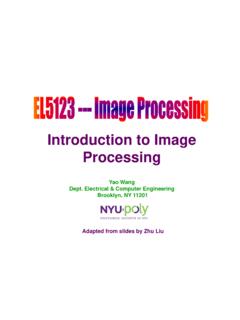
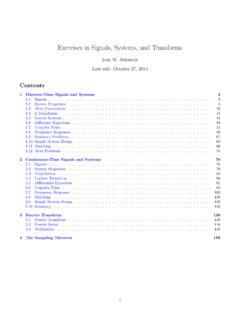

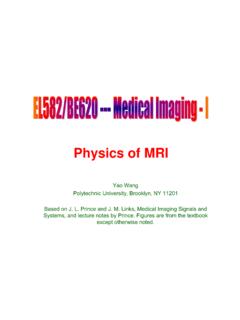
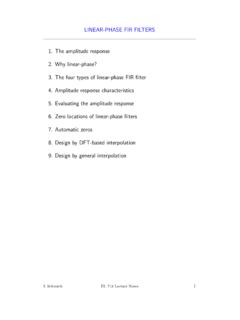


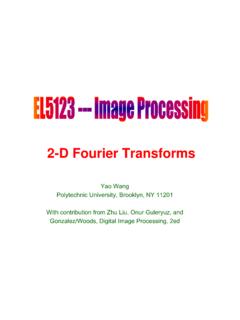
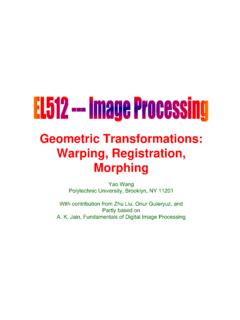


![arXiv:1406.1078v3 [cs.CL] 3 Sep 2014](/cache/no-preview.jpg)
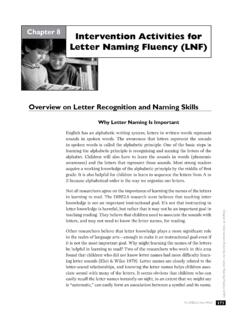

![arXiv:2102.12122v2 [cs.CV] 11 Aug 2021](/cache/preview/d/7/3/b/1/7/c/e/thumb-d73b17cebfb60aa16fa542b569e7578f.jpg)
